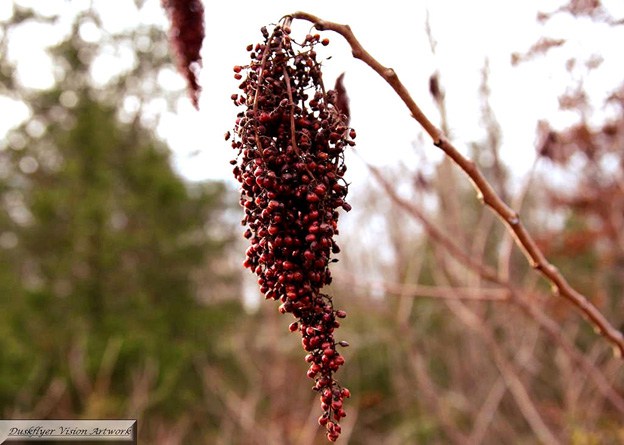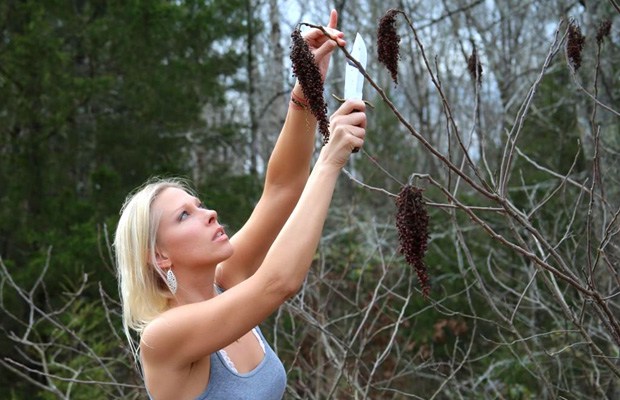
Foraging for Wild Carrot (Queen Anne’s lace), Sumac and Cattails
My study, fascination and field knowledge started early with plants and herbs. I was intrigued by the “Old and Unique” Shaker women’s ways and the vast knowledge of a plant or herb’s medicinal properties and applications.
My Father, was a quiet but powerful inspiration to me as he would busy himself in the “Seasons of Growing” and harvesting beautiful plants and flowers. I remember the very first organic garden he helped me plant with great patience. I can still see and feel the memory every time my bare feet touch the newly upturned coolness of the sandy loam in the hot and hazy weather.
This article will feature two of my favorite wild edible plants, Wild Carrot, species- Daucus carota and Sumacs- Rhus spp. I believe it is of great value and importance to know about the wild edible plants in your vicinity and how foraging for edible plants can benefit you. You may need this information if one were to be lost or stranded in the woodlands for some time.
Wild Carrot (Queen Anne’s Lace)
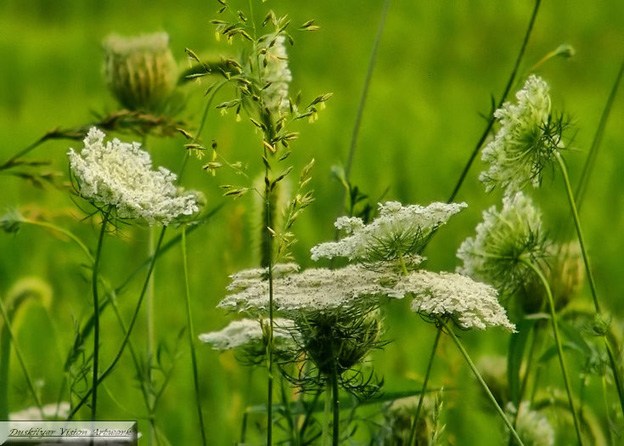
Wild Carrot (Queen Anne’s Lace) in an Illinois field before a storm
I will start with Wild Carrot, species- Daucus carota. This lovely white flowered plant is also affectionately called Queen Anne’s Lace, Bird’s Nest (for the dried brackets) and Bishop’s Lace. This plant is a somewhat biennial herbaceous plant that will grow to 1 or 2 feet high. The little flowers in the bracket are white and flat in a lacy clustered umbel. The leaves are tripinnate and very fine with stiff bracts that have three forks.
It is of extreme importance to remember that Wild Carrot has a firm stem that have small hairs all around it. The edible root smells of carrot.
One of the most crucial things I learned about this plant may also be a lifesaver in a field study especially if you are in need of food! The plant has a tiny red to purple flower in the direct center of the lacy cluster. This little flower derives its color from anthocyanin to attract insects, is worth noting in the field. You must be able to identify this when searching for Wild Carrot because it resembles Poison Hemlock. Poison Hemlock’s root smells vile and leaf stalks are hairless! A small amount of Hemlock can cause paralysis and death! Please always remember this in your field study of wild plants.
I also want to remind everyone because of misidentification, beginners should make no attempt to use Wild Carrot until you can distinguish it from Poison Hemlock and Fool’s Parsley! Once you feel comfortable in your knowledge of this plant you will find it to be useful. It grows abundantly throughout fields and waste places in Midwest, southern and northern regions of America. It will flower from May to October.
Sumacs- Rhus spp.
Sumacs are lovely summer to autumn shrub like or small trees with large feather compound leaves, pithy twigs and milky sap. The densely packed red fruit clusters are small, hairy and dry. The silhouette of this plant in winter is distinctive for it holds onto its clusters.
Sumac can be used as a refreshing drink with vitamin c. Its acidic nature makes it taste like a pink lemonade. I would always find this abundant plant on upland open fields and forest borders in IL, IN, KY, TN and northern GA.
In the summer when the berries are ripe and before the heavy rains wash away the acid, collect the entire fruit cluster and rub it gently to bruise the red berries. You then can soak for 10 to 15 minutes in cool water. Then gently remove the cluster and pour the pink juice mix through cheesecloth to strain out any tiny hairs and berries. You can drink as is or sweeten to taste this refreshing drink.
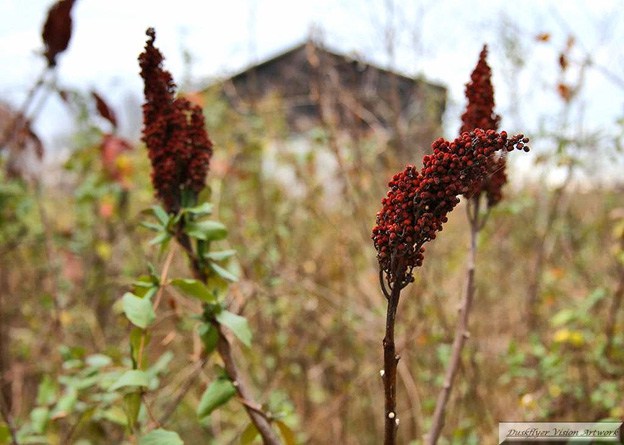
Smooth Sumac in a Kentucky Autumn Field
Cattails
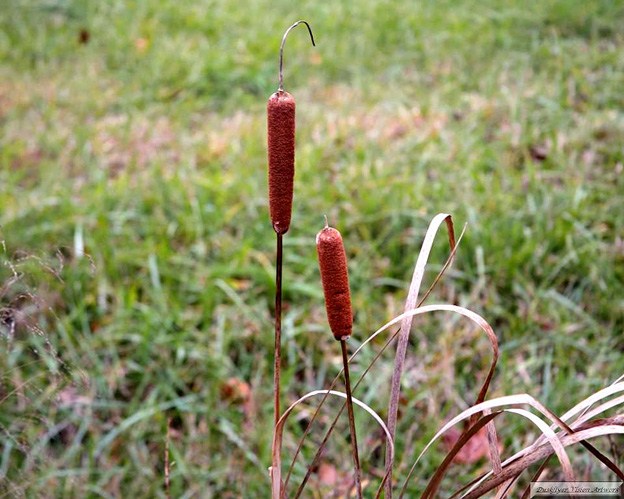
Cattails- Typha spp. is one of the most interesting plants found profusely in brackish and shallow water. It flowers May through hot July forming extensive tall stands in wet areas.
I love that Cattails have so many uses as an edible plant! You can use the stalks and shoots, spikes, pollen, sprouts, rootstock and the immature flower. How incredible is that and great to know if you are in the wild stranded without food for a period of time.
The leaves of this stately plant are sword like and erect. The stiff stems are unbranched and topped with cylindrical heads of tiny flowers. The male flower head is golden yellow when full of pollen and the female flower head is sausage shaped green at first and then turning to a warm brown.
It is one of the most versatile of the wild edible plant family. In springtime the young shoots can be pulled from the rootstock, peeled and then boiled for 10 to 15 minutes like an asparagus. It can also be eaten raw. The very young flower spikes can be prepared and eaten like corn on the cob with butter. Gather these before they erupt out of their paper like sheathing of leaves and boil. This makes a unique wild vegetable to enjoy. The young 2-4 foot stalks can be prepared and peeled to the white core and boiled just like the shoots. The pollen makes an excellent and rich in protein flour that can be used with wheat flour or on its own. Gather the golden flower spikes in early summer and put into a plastic bag to shake off the pollen. Before autumn the flower heads produce a horn like sprout that forms on the tip of the rootstock. These can be boiled for 10 minutes or added to salads. Cattails have a starchy core at their base that can be prepared like a potato. Last but not least during fall, winter and early spring the cattails rootstocks that are buried shallow have collected much starch. This starch can produce lovely white flour. Collect, wash well and peel the outer covering to reveal its core. Crush the core in a pail of cool water to separate fibers from the starchy substance. Remove fiber to allow starch to settle and then pour the water off. Repeat this process one more time and then you will have a nice flour to use or dry it to use at a later date. Always dry the flour and plants very well before storing to ensure freshness and keep rancidity at bay.
It is very enjoyable to do field studies and school yourself of the properties and uses of the wild edible plants that grow profusely in your vicinity. It may be of great importance to you and your loved ones. Enjoy the great outdoors and all it has to offer. Always enjoy the journey….
Stay tuned for more of my wild edible plant writings!
The photographs that accompany this article were taken by me in Indiana, Illinois and Kentucky.


